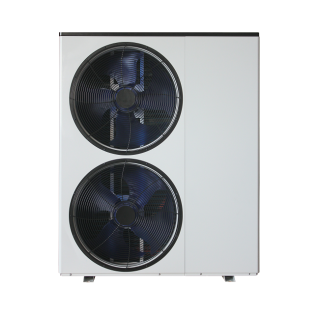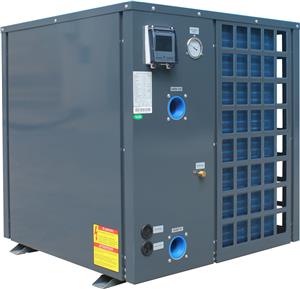Vertical swimming pool heat pump, easy to install, easy to operate, save the installation space, excellent performance and high COP
The using of Vertical heat pump
Vertical heat pumps, especially vertical ground source heat pumps, are mainly suitable for the following scenarios, Its core advantages lie in the efficient utilization of underground stable thermal energy and space-saving design. Suitable for spaces with limited dimensions such as detached houses, townhouses, or small apartment complexes that require year-round temperature control. Through vertical buried U-tube circulation systems extending over 100 meters deep into the ground, it facilitates heat exchange between circulating fluids and soil, ensuring stable efficiency unaffected by drastic surface climate fluctuations. Vertical heat pump can provide comfortable indoor temperature (heating/cooling) and maintain appropriate humidity for the residence. Commercial and public buildings: Particularly suitable for office buildings, schools, hospitals and other medium and large buildings that require continuous air conditioning load. The vertical buried pipe system occupies far less space than the horizontal buried pipe, which is more feasible in cities or areas with tight land. The system has low operation and maintenance costs, and helps significantly reduce the carbon emissions of buildings. Vertical heat pump In summer areas with high ambient temperature (such as the case of Mexico), vertical systems can still provide effective cooling. Its "reverse operation" capability can discharge indoor heat into the ground in summer to achieve efficient cooling. New product heat pump heating in winter without additional auxiliary heat source, especially suitable for cold areas. Now there are more and more projects requiring heat pumps high energy efficiency and low carbon emissions. Because of its high energy efficiency ratio (COP) (often over 3.0), it is the preferred alternative to fossil fuel heating systems, greatly reducing operating energy consumption and costs. No direct pollution, in line with sustainable development and green building standards. System design (e.g., well depth, pipe diameter, number) can be optimized through thermal and economic models to ensure long-term cost effectiveness. Vertical heat pump is not affected by surface climate fluctuations, and the absorption of heat in winter and heat discharge in summer depend on the stability of soil temperature. Air source heat pump Absorbs heat from ambient air and releases it after temperature is raised through compression cycle. Heating efficiency is significantly affected by temperature, and auxiliary technologies (such as jet enthalpy) are required to maintain operation in low temperature environment. Energy efficiency ratio (COP) Stable throughout the year (usually>3.0) higher when temperature is>7℃ (COP ≈ 3), and significantly decreased at low temperature Low temperature adaptability -20℃ still operates efficiently requires low temperature special model (-12℃ working condition) Installation requirements Drilling is required. Small footprint but high initial cost. No underground works are required and outdoor installation is convenient Vertical heat pump is more suitable : cold areas (such as north) stable heating/cooling all year round; Radiator heating system requiring high supply water temperature (> 55℃); Land is limited but high-load commercial buildings (hospitals, schools, etc.). Air source heat pump is more suitable for : mild or hot climate areas (south); Swimming pool heat pump constant temperature, domestic hot water and other medium-low temperature demand; renovation project or budget limited scenarios. Carbon emissions Vertical heat pumps have better long-term carbon emissions due to less power consumption. The initial investment of air source heat pump is low, but the operation cost in cold areas is high; Vertical heat pumps are expensive to install (drilling costs), but have a long life of up to 20 years and lower operating costs. Vertical heat pump Geological conditions are limited (e.g., difficulty of drilling rock layers), and the design requires accurate calculation of soil thermal balance. Air source heat pump Low temperature defrosting reduces efficiency, noise control requirements are higher. Vertical heat pumps demonstrate significant advantages in energy efficiency stability and low-temperature performance, making them suitable for long-term high-load demands in cold regions. Air-source heat pumps, with their flexible installation and cost-effectiveness, are ideal for mild or medium-low temperature climates. Decision-making should consider geographical location, budget, and thermal load requirements comprehensively.










